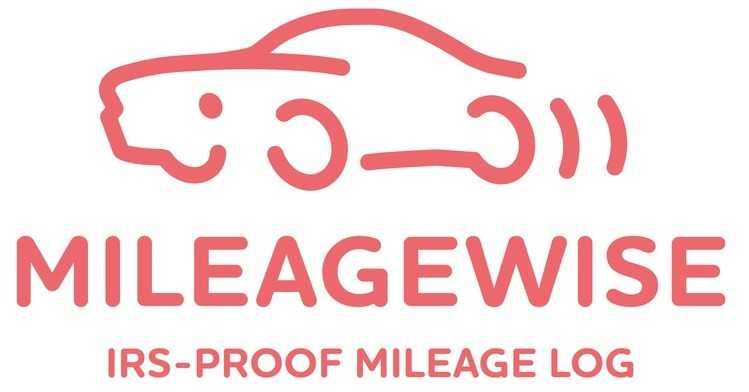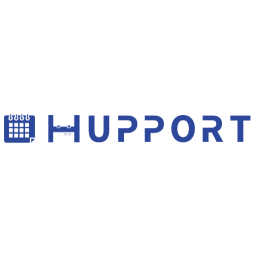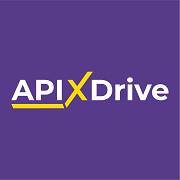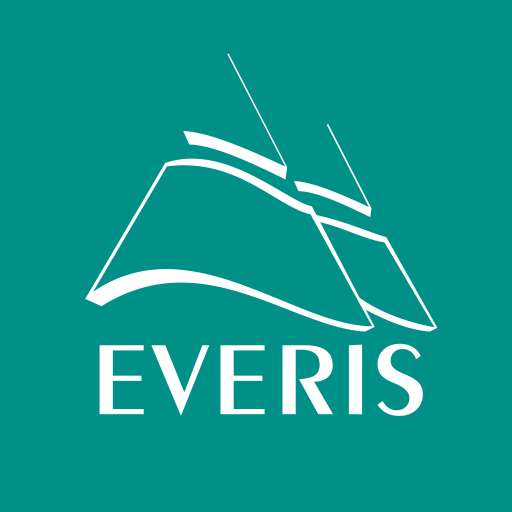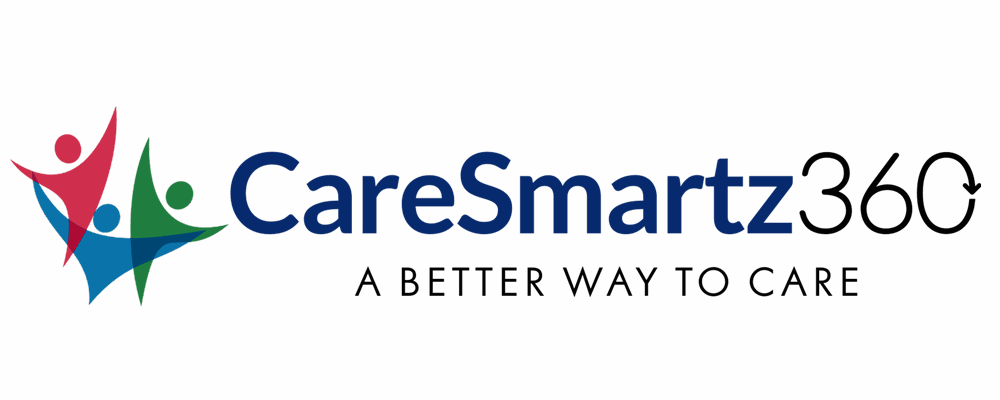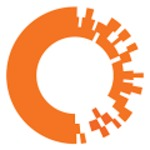Yes, most SaaS management software may be accessed across numerous devices and platforms. This is one of the primary advantages of SaaS because it enables users to access the software remotely from any device with an internet connection. Furthermore, SaaS management software is designed to be compatible with a wide range of operating systems and browsers, allowing it to be used on a variety of devices and platforms, increasing user comfort and flexibility.
List of 20 Best SaaS Management Software
CloudEagle.ai solution for reducing SaaS expenses for finance, operations, and IT departments. With a track record of success for brands like BirdEye, RingCentral, and Shiji, CloudEagle.ai is the go-to choice for saving 10-30% on software costs. It s...Read More CloudEagle.ai
Desktop.com solution for individuals and teams to effortlessly create and collaborate on multiple online desktops. Our platform boasts a user-friendly interface, providing easy organization and access to all your apps, tools, and links from any devic...Read More Desktop.com
Kubeark is aversatile platform that simplifies the deployment and scaling of software, regardless of the system type. With Kubeark, you have the flexibility to manage and scale your applications on any infrastructure, be it private or public cloud, o...Read More Kubeark
MileageWise solution for creating IRS-compliant mileage logs. Perfect for Small Business Owners, Companies, Entrepreneurs, and Tax Professionals, our powerful Mileage Tracker App and user-friendly Web Dashboard make generating accurate logs a breeze...Read More MileageWise
CloudFX solution for simplifying and optimizing your SaaS subscriptions. Say goodbye to manual tasks and streamline your revenue and workflows across teams and locations. With CloudFX, you can automate approval processes and accelerate revenue proces...Read More CloudFX
SSOJet is a user management tool for your B2B SaaS. Streamline your operations and eliminate headaches with this powerful solution, designed to simplify user management. Say goodbye to lengthy onboarding processes and welcome quick and easy integrati...Read More SSOJet
DevStride solution for effective project and portfolio management. Designed to enable effortless collaboration among multiple teams, our advanced software offers a comprehensive set of tools to streamline processes and enhance team management. With D...Read More DevStride
QuantumSocial is the social media scheduling software that simplifies the process of managing your online presence. With QuantumSocial, say goodbye to spending hours curating, scheduling, and publishing content on your social media accounts. Our adva...Read More QuantumSocial
Hupport is solution for managing appointments and minimizing no-show rates. Our streamlined scheduling software eliminates the need for lengthy email exchanges, making it effortless to coordinate meetings. With Hupport, you can take charge of your sc...Read More Hupport
Revamp your work processes with ApiX-Drive. Our intuitive web interface seamlessly integrates all your apps and services, increasing efficiency by up to 50%. With its powerful automation capabilities, ApiX-Drive eliminates tedious manual tasks, freei...Read More ApiX-Drive
Frontegg is a identity management software that puts users in control of their own information, all while providing top-notch security and advanced enterprise features. Our platform boasts a user-friendly management interface that streamlines process...Read More Frontegg
Utopi - software platform that optimizes your assets value. By collecting and analyzing real-time data from your buildings, it delivers a holistic view of your portfolios environmental impact. This empowers informed decision-making and improved under...Read More Utopi
Everis is a solution designed for service companies to streamline and enhance business processes. Our versatile Saas-platform offers a seamless integration of employee and client communication, providing a superior experience. With Everis, you can op...Read More Everis
UBS is a business management software that simplifies all aspects of your company. It effortlessly handles recruitment, employee management, and project tracking, streamlining your processes into one centralized platform. No more scattered operations...Read More UBS
Spendbase the cost-cutting solution for modern businesses. Achieve up to 30% savings on SaaS and Cloud expenses without any initial fees. Take advantage of our collaborative software discounts, vendor negotiation features, and complete expense and su...Read More Spendbase
Cledara is a saas management tool that brings together all your subscriptions into one organized hub. With Cledara, easily track and manage your organizations operations for optimal efficiency. Boost collaboration and boost performance with the user-...Read More Cledara
Saastrax is a cloud-based software management solution. Our intuitive dashboard, instant notifications, and top-notch security features make it easy for your organization to discover and handle Shadow IT, remain compliant, and cut unnecessary costs...Read More Saastrax
SailPoint is a identity security solution that leverages advanced AI technology to simplify and speed up access management. It provides reliable and instant access to crucial data, resulting in increased productivity and reduced risks for businesses...Read More SailPoint
CareSmartz360 is the leading HIPAA-compliant software solution for home care businesses and private-duty agencies. Our cloud-based platform allows you to effectively manage all aspects of your operations from one centralized location. Our integrated...Read More CareSmartz360
Apptio SaaS Insights solution for maximizing the value of your technology investments. With unparalleled visibility and control, you can confidently make data-driven decisions to optimize your finances and streamline operations. Take your financial s...Read More Apptio SaaS Insights
Learn More About SaaS Management Software
- What Is SaaS Management Software?
- What Are The Recent Trends In SaaS Management Software?
- Benefits Of Using SaaS Management Software
- Important Factors To Consider While Purchasing SaaS Management Software?
- What Are The Key Features To Look For In SaaS Management Software?
- Why Do Businesses Need SaaS Management Software?
- How Much Time Is Required To Implement SaaS Management Software?
- What Is The Level Of Customization Available In SaaS Management Software?
- Which Industries Can Benefit The Most From SaaS Management Software?
- Conclusion
What Is SaaS Management Software?
SaaS (Software as a Service) Management Software is a cloud-based platform that enables enterprises to manage and optimize their use of numerous SaaS applications. With the growing usage of cloud-based software solutions, organizations of all sizes require a more effective way to manage these apps.
This program enables enterprises to centrally manage their SaaS subscriptions, user access, and spending, giving them a complete picture of their SaaS environment. It also includes features like automated license tracking, user onboarding/offboarding, and usage monitoring, which help businesses control costs and streamline their SaaS operations.
SaaS Management Software can be especially useful for larger firms with several teams and departments that use various SaaS services. It provides greater visibility and control, ensuring that all team members use the most cost-effective and efficient software for their needs. Furthermore, this type of software offers real-time analytics and reporting, enabling firms to uncover usage trends, potential cost reductions, and security threats.
It also interacts with popular SaaS programs, giving organizations a unified platform to manage all of their SaaS subscriptions. In essence, SaaS Management Software provides enterprises with a consolidated and efficient solution for managing their increasing collection of SaaS apps. By offering a full perspective of SaaS usage and spending, organizations can streamline their operations, cut expenses, and increase security, making it a worthwhile investment for any organization.
What Are The Recent Trends In SaaS Management Software?
SaaS (Software-as-a-Service) management software has become a must-have tool for enterprises of all sizes, allowing for more efficient management of cloud-based software applications and services. With the increasing need for SaaS solutions, the market for SaaS management software is always changing with new trends and improvements.
Let's explore, we'll look at the latest trends in SaaS management software to help you make an informed purchase decision.
1. Increased Emphasis On Security And Compliance: As more businesses rely on SaaS applications to operate their operations, strong security and compliance procedures have become critical. Recent trends in SaaS management software indicate a push for improved security features such as data encryption, multi-factor authentication, and enhanced access controls. This guarantees that sensitive data and information are protected, and that enterprises comply with data privacy rules.
2. Integration With Different SaaS Apps: One advantage of SaaS management software is its ability to integrate with other SaaS apps, resulting in a consolidated management platform. Recent trends indicate an increase in demand for SaaS management software that integrates smoothly with other SaaS applications, including as CRM, marketing, and project management tools. This increases efficiency and production while also improving data management and analytics.
3. Automation And AI capabilities. Automation and artificial intelligence (AI) have become buzzwords in the IT sector, with SaaS management software being no exception. Recent trends indicate an increase in the usage of automation and AI in SaaS management software, allowing tasks like license tracking, user access management, and resource allocation to be completed automatically. This saves time and effort while also eliminating errors and ensuring correct data management.
4. Vendor Management Features: The increasing number of SaaS applications used by enterprises need effective vendor management. Contract management, vendor performance tracking, and cost optimization tools are among the new features added to SaaS management software. These capabilities enable firms to manage their SaaS subscriptions, track vendor relationships, and make educated software expenditures.
5. Mobile Accessibility: With the rise of remote work and the use of mobile devices, SaaS management software is evolving to meet changing user expectations by providing mobile accessibility. Recent trends indicate an increase in the availability of mobile apps for SaaS management software, allowing customers to manage their SaaS applications from anywhere and at any time. This kind of accessibility enables real-time tracking and management of software programs, even when on the go.
Benefits Of Using SaaS Management Software
SaaS management software, also known as Software-as-a-Service management software, is an effective solution for helping businesses streamline and optimize their cloud-based services. With the growing popularity of SaaS solutions, enterprises must effectively manage and monitor their numerous SaaS applications.
Let's explore, we will look at the advantages of utilizing SaaS management software and how it may help your entire business operations.
1. Centralized Management: One of the key advantages of adopting SaaS management software is that it enables businesses to manage their SaaS subscriptions centrally. This implies that instead of having separate logins and dashboards for each service, you can access and manage all of your SaaS apps from a single centralized platform.
2. Cost Savings: SaaS management software can help firms save money by giving information about their SaaS usage and utilization. This data allows enterprises to detect unused or redundant apps and make smart subscription optimization decisions. This can lead to significant long-term cost reductions for enterprises.
3. Enhanced Security: SaaS management software allows enterprises to maintain the security of their data and apps. The software includes capabilities like single sign-on (SSO) and multi-factor authentication (MFA), which can help improve the security of your cloud-based services.
4. Increased User Productivity: SaaS management software can boost user productivity by streamlining access to various SaaS services. With a consolidated platform, users can simply access their essential apps without having to remember different logins and passwords, allowing them to focus on their work rather than the technical details.
5. Improved Visibility And Control: SaaS management software gives you real-time insight into the usage and performance of your SaaS apps. This enables businesses to have greater control over their cloud-based services, discover and manage issues more rapidly, and make data-driven choices.
6. Scalability: As your firm expands, so will your demand for SaaS apps. SaaS management software can let you smoothly grow your subscriptions to match your organization's evolving needs. You can effortlessly add or remove users, assign licenses, and manage payments from a single centralized platform.
Important Factors To Consider While Purchasing SaaS Management Software?
When choosing SaaS management software, customers should keep three key things in mind. As more organizations rely on cloud-based software solutions to run their day-to-day operations, it is critical to choose the correct SaaS management software that meets your specific requirements and adds value to your firm.
Here are the essential variables to consider while making a purchasing decision.
1. Scalability: As your company grows, your software must be able to keep up. When choosing SaaS management software, examine its scalability and whether it can meet your future requirements. This will prevent you from having to convert to a new software later, which may be expensive and disruptive.
2. User-Friendly Interface: A decent SaaS management software should be simple to operate and navigate. This is especially critical if you have team members who are not technologically proficient. A user-friendly design will make it easier for everyone to utilize the software, increasing its efficacy.
3. Integration Capabilities: When selecting SaaS management software, ensure that it can readily interact with your existing systems and applications. This ensures a smooth flow of data and procedures inside your firm, saving you time and effort.
4. Data Security: As with any software that saves sensitive information, security is paramount. Before making a purchase, learn about the security mechanisms in place, such as data encryption, secure access procedures, and scheduled backups.
5. Customisation Options: Each organization has its own set of requirements and practices. A decent SaaS management software should allow for customization to meet your individual needs. This will ensure that the software is in line with your business objectives and reaches its full potential.
6. Customer Support: If there are any problems or questions, it is critical to have a dependable and responsive customer support staff. Check reviews and ask for references to obtain a sense of the software provider's customer support quality.
7. Pricing: While SaaS management software can save money over traditional software, it is still necessary to analyze the pricing structure and functionality available. Look for software that has straightforward price and is within your budget.
8. User Reviews and Ratings: Conduct research and read feedback from other firms that have utilized the program. This will improve your grasp of the software's strengths and drawbacks, allowing you to make an informed decision.
Overall, before making a purchase, thoroughly consider your business needs, the software's features and capabilities, and the vendor's reputation and trustworthiness. With the appropriate SaaS management software, you can streamline processes, increase productivity, and drive business growth.
What Are The Key Features To Look For In SaaS Management Software?
When selecting SaaS Management Software, every buyer should look for a few important aspects to guarantee that they are obtaining the most value and functionality for their company.
These features include the following:
1. Single Dashboard: A SaaS Management Software should feature a single, centralized dashboard where customers can monitor and manage all of their SaaS subscriptions. This simplifies the management procedure and saves time and effort for the user.
2. Automated Provisioning: Look for software that supports automated provisioning, which enables faster deployment of new SaaS services and simplifies the onboarding process for new customers. This function helps to decrease human labor and errors, resulting in a smooth and effective process.
3. User Access Management: The ability to restrict user access to certain SaaS applications based on role and responsibilities is critical for security and compliance. Look for software that provides granular user access controls and multi-factor authentication for extra security.
4. Cost Management: A decent SaaS Management Software should provide information about the cost and usage of different SaaS applications. This will assist customers in identifying underused or underutilized applications and optimizing their SaaS spend, resulting in cost savings to the business.
5. Dashboards And Reports: Detailed dashboards and customisable reports are required to monitor and analyze SaaS application usage, cost, and performance. Look for software that provides real-time data visualizations and reporting capabilities so you can make informed decisions and track progress.
6. Integration Capabilities: Ensure that the SaaS Management Software you select can integrate with your existing IT infrastructure and tools, such as HR and procurement systems. This ensures a smooth flow of data and operations, eliminating the need for manual inputs and lowering the possibility of errors.
7. Compliance And Governance: Businesses in regulated industries must adhere to compliance and governance standards. Look for software that includes data encryption, audit trails, and compliance reporting to guarantee that your SaaS apps meet regulatory requirements.
Why Do Businesses Need SaaS Management Software?
SaaS (Software as a Service) is an increasingly common way for businesses to access and use critical software resources. However, as SaaS adoption grows, so does the issue of managing various software licenses, user identities, and data across platforms. This is where SaaS management software comes into play, offering a centralized solution for efficiently managing and optimizing SaaS usage for enterprises of all sizes.
One of the primary reasons why businesses use SaaS management software is to save time and resources when managing their SaaS subscriptions. With several software solutions utilized by various teams and departments, manual management can soon become overwhelming and time-consuming. SaaS management software automates this process by offering a unified platform for enterprises to monitor and manage all of their subscriptions, users, and data.
Furthermore, SaaS management software helps firms reduce expenses by discovering redundant or underutilized subscriptions. It gives information on usage and user behavior, allowing firms to optimize software spending and avoid paying for unwanted licenses. This can result in significant cost reductions for firms, particularly those with large teams and complicated software stacks.
Another essential component of SaaS management software is its ability to ensure data security and compliance. With businesses using a range of SaaS applications, it can be difficult to monitor and manage user permissions and access to important data. SaaS management software provides strong security and compliance capabilities, such as single sign-on, user access controls, and data encryption, to help enterprises keep control of their data and comply with industry requirements.
These technologies not only streamline SaaS management, but they also provide useful decision-making insights. SaaS management software provides data analytics and reporting capabilities, allowing firms to monitor software usage, expenses, and ROI. This data can assist firms in making informed software stack decisions, identifying cost-saving opportunities, and optimizing their entire software strategy.
How Much Time Is Required To Implement SaaS Management Software?
The timing for installing SaaS management software varies depending on several factors, including the size of the organization, the complexity of the program, and the team's preparation. On average, the program can take between a few weeks and a few months to fully develop and integrate into your company's processes.
However, it is vital to note that the schedule is partly determined by the cooperation and involvement of the implementation team. The first step in installing SaaS management software is a thorough evaluation of your organization's needs and requirements. This entails performing a thorough review of your present operations and determining where the software may add the greatest value.
This process can take from a few weeks to a month, depending on the complexity of your organisation. Following that, the actual implementation process begins, which includes installing the software, configuring it to meet your business requirements, and teaching your team on how to use it efficiently. This process can take anything from a few weeks to a few months, depending on the size of your organization and the number of individuals that will use the software.
It is also critical to consider the time required for data migration, if applicable, as this can greatly effect the entire implementation timetable. Furthermore, there may be a requirement for customization or integration with other existing systems, which can extend the implementation timeline. Overall, the deployment time for SaaS management software might range from a few weeks to several months.To avoid delays and guarantee a smooth and effective implementation, it is critical to set realistic timeframes, involve all stakeholders, and provide adequate training and resources.
What Is The Level Of Customization Available In SaaS Management Software?
SaaS Management Software, also known as Software as a Service Management Software, is a form of technology that enables enterprises to effectively manage cloud-based applications. It offers a comprehensive solution for monitoring and regulating the use, costs, and overall performance of SaaS applications. One important factor to consider while selecting SaaS Management Software is the level of customization available.
This refers to the software's ability to be customized to meet the unique demands and preferences of a business. In general, most SaaS Management Software provides a significant degree of customisation. This is because businesses have unique requirements and procedures, and a one-size-fits-all strategy may not be effective for everyone. As a result, SaaS Management Software frequently includes a variety of customization options to meet each company's specific requirements.
Some popular customization capabilities in SaaS Management Software include the ability to assign unique roles and permissions to users, individual dashboards and reports, customisable alerts and notifications, and the possibility to interact with other tools and systems. When determining the extent of customisation in SaaS Management Software, it is critical to evaluate your company's specific needs.
For example, if your firm has complicated operations, you may require software with greater customization capabilities. On the other hand, if your company's workflows are reasonably simple, software with modest customization capabilities may suffice. In addition to customization choices, SaaS Management Software should be customizable with simplicity. Some tools may require specific technical expertise, but others have a user-friendly interface that allows non-technical users to manage and adjust the software.
Which Industries Can Benefit The Most From SaaS Management Software?
SaaS management software has become an essential tool for firms in a variety of industries, allowing them to streamline operations and enhance overall productivity. This cloud-based software eliminates the need for traditional software installation and maintenance, making it an affordable option for businesses of all sizes.
The following industries can benefit the most from SaaS management software:
1. IT And Technology: The IT industry is always changing, and SaaS management software is ideal for its fast-paced, flexible environment. It enables IT teams to manage and monitor various SaaS apps while assuring security, compliance, and cost efficiency.
2. Healthcare: In the healthcare industry, data privacy and compliance standards are extremely important. SaaS management software simplifies the difficult process of managing patient data while conforming to industry standards, saving healthcare companies time and resources.
3. Education: SaaS management software is very useful for educational institutions that use SaaS apps for teaching, learning, and administration. It offers visibility and control over spending, user access, and data security, making it an indispensable tool for educational institutions.
4. banking: SaaS management software is transforming the banking industry, where data is important and security is paramount. By automating time-consuming procedures such as licensing and subscription management, finance teams may devote more attention to strategic initiatives.
5. Marketing And Advertising: Marketers utilize a variety of SaaS solutions for their campaigns, making it difficult to assess and control costs. SaaS management software simplifies this process by providing an overview of all tools used, their costs, and user access, resulting in effective budget management.
6. Non-Profits: Non-profit organizations frequently operate with limited resources and must carefully manage their finances. SaaS management software enables them to track and optimize spending across multiple departments, resulting in more efficient use of cash for their cause.
Conclusion
To summarize, selecting the correct SaaS management software is critical for any business trying to streamline and enhance its cloud-based operations. Buyers can make an informed decision by carefully analyzing the features, pricing, and customer support of several solutions, which will benefit their organization's efficiency and bottom line. When comparing SaaS management software, consider characteristics that meet your company requirements, such as user management, automation, and integration possibilities.
Furthermore, considering the software's pricing and scalability will assist ensure a long-term investment capable of accommodating future expansion. Furthermore, the software provider's degree of customer assistance is an important consideration. Look for providers who give comprehensive training, onboarding, and continuing support to get the most out of your investment and reduce downtime.
Finally, selecting the correct SaaS management software will increase your organization's efficiency, security, and cost-effectiveness while managing several SaaS apps. Keeping these elements in mind will allow you to make an informed decision and catapult your organization to success. We hope this buyer's guide has helped you find the best SaaS management software.
SaaS Management Software FAQ's
Can SaaS Management Software Be Accessed Across Multiple Devices And Platforms?
Is SaaS Management Software Future-Proof And Adaptable To Emerging Technologies Like AI, Blockchain Or IoT?
Yes, SaaS Management Software is intended to be future-proof and adaptable to new technologies such as AI, blockchain, and IoT. These software solutions are constantly updated and improved to integrate the most recent technological breakthroughs, assuring their ability to support emerging technologies.
Furthermore, many SaaS Management Software suppliers give customizable solutions, enabling organizations to smoothly integrate new technology into their systems. This makes SaaS Management Software a dependable and future-proof option for firms seeking to stay competitive in the digital arena.
Is There A Free Trial Offered To Assess SaaS Management Software Before Committing?
Yes, most SaaS management software vendors provide free trial periods to potential customers so they may try out their platform before making a commitment. This allows users to examine the software's features and functionalities and assess whether it satisfies their business requirements. It is critical to take advantage of this offer to evaluate the software's usability, productivity, and overall benefits for your business.
Does SaaS Management Software Offer Data Security Features And Meet Regulatory Compliance Standards?
Yes, SaaS management software has strong data security measures and satisfies regulatory compliance standards, ensuring the protection and privacy of sensitive data. This includes encryption, access limits, and routine security assessments.
It also helps businesses comply with industry-specific requirements such as GDPR, HIPAA, and PCI DSS. Businesses can manage their software subscriptions with confidence thanks to a safe and compliant SaaS management platform, eliminating the danger of data breaches or regulatory penalties.
Can SaaS Management Software Integrate Seamlessly With Existing Tools And Platforms?
Yes, SaaS management software can work smoothly alongside existing tools and platforms. SaaS management software may readily connect and communicate with other systems via a variety of API connections and integrations, resulting in a seamless and effective workflow. This integration capability eliminates the need for human data entry while increasing efficiency and productivity, making it an important addition to any organization's technology stack.




